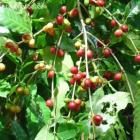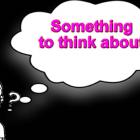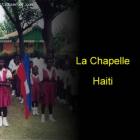Haitian Culture and Traditions
Haitian culture with many artistic, cultural and historic contents has very strong West African root with French colonial influence which was further supplemented with contribution from Taino and Spanish imperialism. They are evident in every form of their language, music and culture. Haitian music has been greatly influenced by its Spanish-speaking neighbors from Cuba and Dominican Republic and they were adopted in a form derived from vodoo ceremonial traditions. Konpa (in Creole) or Compas (in French and Spanish) meaning rhythm or tones; it is one form of complex evergreen music that mixes European ballroom dancing with African rhythms taken in bourgeois culture of Haiti. It is mostly played in medium-to-fast tempo beats, accompanied by electric guitars, synthesizers and either a solo alto saxophone, a horn section or the synthesizer equivalent.
Naïve perspectives and crafty humor in brilliant colors are the main ingredients of Haitian art. Colorful foods and flourishing landscapes are the most common subjects of Haitian paintings. Other typical subjects of the art include rituals, jungle animals, dances, and gods that evoke the African past. There are three main schools of paintings in Haiti. They are the
- Jacmel School (reflects bays of the coastal towns and steep mountains),
- Cap Haitian school (that mostly depicts daily city life)
- Saint-Soleil School (popular with abstract human form in Voodoo influence).
The most famous pieces of architectural work in Haiti are the monuments located at the Palace of Sans Souci and the Citadel that have been declared as World Heritage Site in 1982. The structures were built in the early 19th century after the Haiti's independence from France. The month of February is the festive season with Carnival and all-night party in Haiti. People dance and sing in the streets, parade floats and the cities are filled with music. “Rara” festival is celebrated before Easter. These give people a chance to escape from their daily lives.

 Korekafe to unlock mysteries of Haitian coffee
Korekafe to unlock mysteries of Haitian coffee
 Self-Driving Autos to Increase Economic Growth
Self-Driving Autos to Increase Economic Growth
 Brasserie Nationale d'Haïti S.A (Brana) new image for Prestige...
Brasserie Nationale d'Haïti S.A (Brana) new image for Prestige...
 Why wasn't Jean Bertrand Aristide Present in Gonaives?
Why wasn't Jean Bertrand Aristide Present in Gonaives?
 Famous Brazilian singer Nelson Ned, passed away
Famous Brazilian singer Nelson Ned, passed away
 Something to think about
Something to think about
 Newsletter
Newsletter
 Informative Marketing and Advertising in the Haitian Community
Informative Marketing and Advertising in the Haitian Community
 Haitian Thanksgiving
Haitian Thanksgiving
 La Chapelle, Haiti
La Chapelle, Haiti